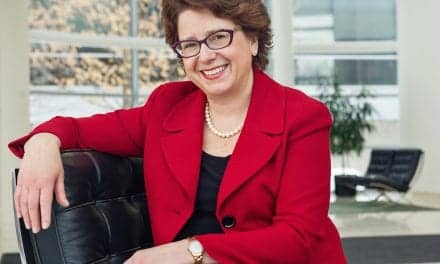 Women’s health is big news today. You can’t turn on a morning show or read a consumer magazine without seeing something on the topic. I even passed a bus stop recently that sported an ad urging women over 40 to get an annual mammogram. This month, it’s Medical Imaging’s turn to look inside women’s health a bit deeper.
Women’s health is big news today. You can’t turn on a morning show or read a consumer magazine without seeing something on the topic. I even passed a bus stop recently that sported an ad urging women over 40 to get an annual mammogram. This month, it’s Medical Imaging’s turn to look inside women’s health a bit deeper.
In our special section, we’re focusing on mammography, bone densitometry and ultrasound of the female body.
Breast cancer is the second deadliest cancer in women, behind lung cancer. (The third? Colon cancer, but we covered that last month.) Approximately 192,200 new cases of breast cancer were found in 2001, according to the National Cancer Institute. While the numbers of deaths has declined, largely thanks to earlier detection and improved treatment, about 40,200 women died of breast cancer last year.
One fact that should urge all women to seek out recommended screening: Hereditary breast cancer makes up approximately 5 to 10 percent of all breast cancer cases. The other 90 to 95 percent of women who get one of the eight or so types of breast cancers (or combinations of them), don’t know they’re at risk.
While mammography, like any science, isn’t perfect, it is the most effective way of screening women today. And thus, adjuncts like ultrasound and MRI are being taken a bit more seriously for good reason. Recommendations for screening typically include annual mammograms after age 40. Some 28 million American women seek screening each year, but a third of women should be screened, but aren’t.
When it comes to bone densitometry, the recommendations of who should get what when are a bit gray. But overall, healthy postmenopausal women who don’t have risk factors (low trauma fracture; family history of low bone mass; cigarette smokers; and have low body weight) for osteoporosis should be tested at 65. Many suggest screening of men at age 70 or 75. Some of these questions should be answered this year when the International Society for Clinical Densitometry is expected to release new guidelines as well as recommendations on how to read bone density studies.
About 44 million people aged 50 or older are at risk for osteoporosis or low bone mass, a quarter of which are men, according to the National Osteoporosis Foundation. Right now primary-care physicians should now be the target for education on the value of bone densitometry screenings. By 2010, that number will exceed 52 million as our population ages. The annual cost? Over $10 billion.
Advances are being made too in ultrasound for the woman, be it obstetrical, gynecological, breast or to assist in minimally invasive surgeries. Some 2.5 million obstetrical ultrasounds are performed each year, which adds up to about a third of all babies born in the U.S. Ovarian cancer is found in about 23,100 American women annually, with about 14,000 deaths. 3D is making a mark on all women’s imaging, as is tissue harmonic imaging.
I hope you’ll turn to our Women’s Health section to take a look for yourself, and in honor of Mother’s Day this month, urge your loved ones and friends to get screened. It could be the best thing you ever do for them.
![]()
Mary C. Tierney, Editor
[email protected]



